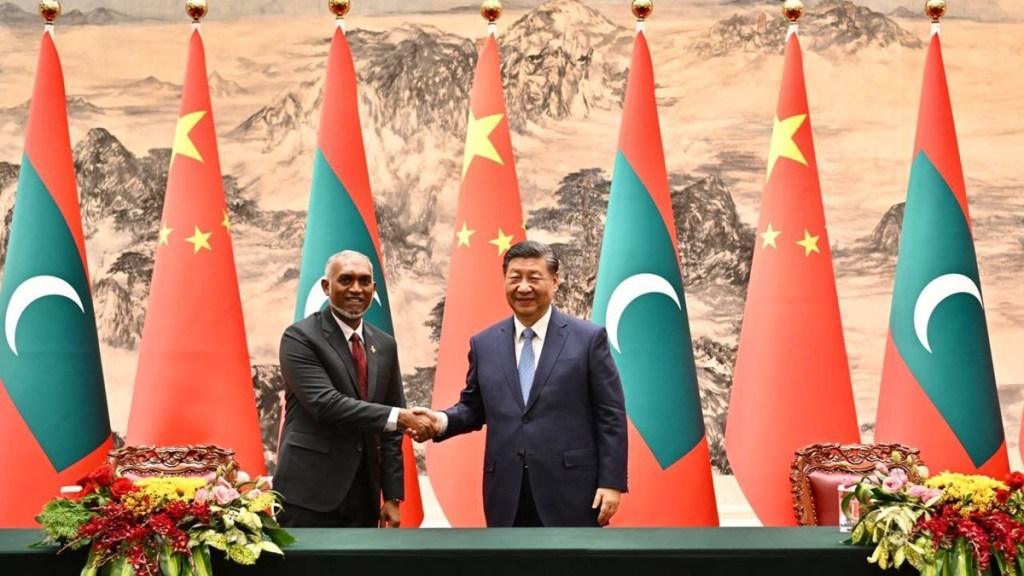After his recent state visit to China, the newly-elected Maldivian President, Mohamed Muizzu, formally requested New Delhi to withdraw 77 military personnel from the island nation by March 15, 2024. President Muizzu, who assumed office in September on an anti-India platform, has been signalling a shift in geopolitical alignment.
In a significant development, the High-Level Core Group between India and the Maldives held its inaugural meeting on January 14, 2024, in Male. The bilateral discussions covered a wide range of issues, including development cooperation. Both nations expressed a willingness to enhance cooperation and agreed to accelerate the withdrawal of Indian military personnel. The second meeting of the High-Level Core Group is set to take place at a later date.
The Ministry of External Affairs
The Ministry of External Affairs (India) issued an official statement stating that the discussions also touched upon finding mutually workable solutions for the continued operation of Indian aviation platforms providing humanitarian and medevac services to the Maldivian people.
The stationed Indian officers in the Maldives played a crucial role in operating and maintaining two Dhruv Advanced Light Helicopters and a Dornier aircraft gifted to the Maldives National Defence Force (MNDF) by India. These aircraft were instrumental in transporting patients from various islands to hospitals in Malé, saving over 500 lives. Additionally, the Dornier aircraft conducted reconnaissance flights against suspicious ships, contributing to the Maldivian military’s efforts against illegal activities.
Implication of this development
The recent developments hold implications against the backdrop of existing tensions between India and China. Farwa Aamer, Director of South Asia Initiatives at the Asia Society Policy Institute, suggests that President Muizzu’s pro-China stance is driving a notable geopolitical shift. The request for the withdrawal of Indian troops reflects a strategic realignment, indicating a potential desire for closer ties with Beijing.
Amid heightened India-China tensions, the Maldives’ actions could have broader geopolitical consequences. Aamer points out that, while not overwhelmingly, this challenges India’s growing influence in the region and may lead to recalibrations in South Asia. Many South Asian nations, like Bangladesh, are striving to balance ties with India and expanding partnerships with China.
Beyond diplomatic considerations, the online disputes and potential tourism-related fallout hint at an economic dimension to this geopolitical rift. According to her the Maldives, traditionally a favoured destination for Indian tourists, faces possible repercussions as sentiments strain between the two nations.
In her analysis she states the evolving narrative between the Maldives and India marks a pivotal moment that necessitates careful consideration. It extends beyond diplomatic intricacies, encompassing potential economic and strategic impacts in the region. An open dialogue and mutual understanding might ease tensions, but these developments could indicate how regional countries respond to the growing India-China competition in the neighbourhood. Some nations might openly align themselves with one side or the other based on their strategic interests and geopolitical considerations.

